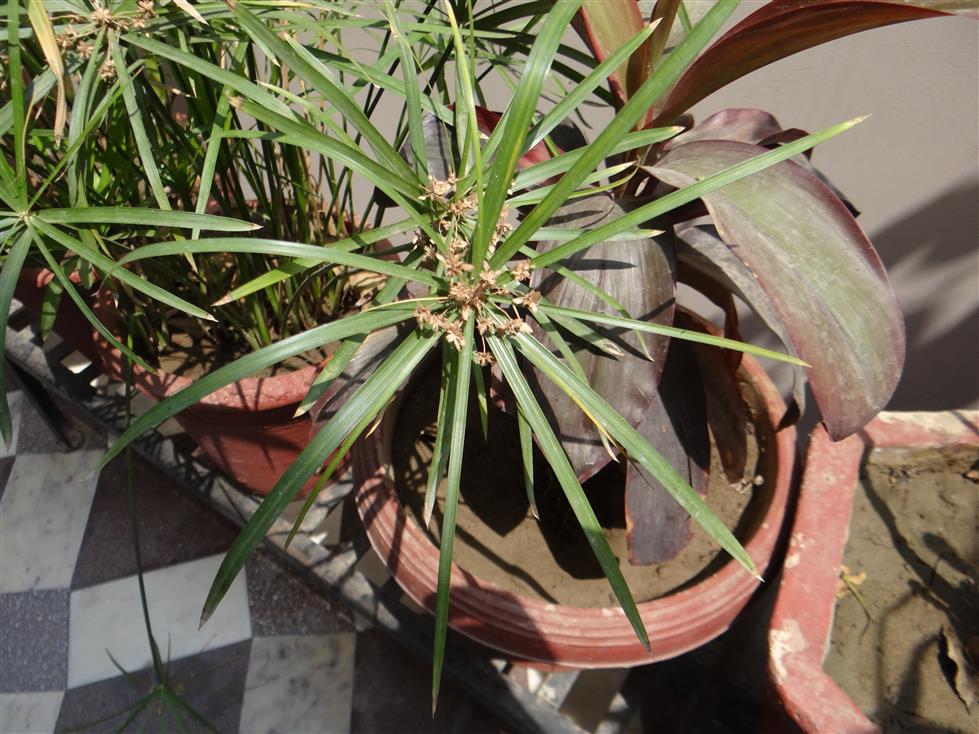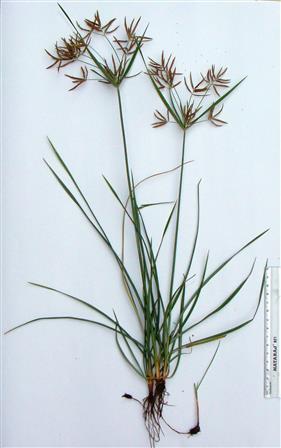CYPERACEAE
Perennial, rarely annual herbs, caespitose or rhizome creeping, often stoloniferous, tuberiferous. Stems (culms) simple, solid, trigonous, glabrous, but sometimes scabrous along edges. Leaves usually in 3-rows, basal or subbasal, consisting of sheath and leaf blade; leaf sheaths tubular, not split down one side as in grasses; leaf blades grass-like, narrow, pointed, often sharply-edged, usually glabrous, apex and margin barbed; blades reduced in certain genera; ligule absent. Inflorescence an unbranched and spicate or capitate, to branched and anthelate (umbel-like) or paniculate, comprising 1 to many ultimate inflorescence units, the spikelets (or sometimes pseudospikelets). Spikelets with 1 to many glumes, sometimes reduced to a single flower and aggregated into unisexual spikes; glume distichous or spirally arranged, membranous to leathery, each subtending a single flower. Flowers hypogynous, bisexual or unisexual with plants monoecious, occasionally dioecious. Perianth absent or with (1-) 3-6 (-many) bristles and/ or scales, usually falling off with fruit. Stamens usually (1-) 3, free; filaments thread-like; anthers linear, bithecous, basifixed. Pistil 1, usually 2-3-carpellate, syncarpous, unilocular ovary, flattened, with 1 basal ovule; style 2-3 branched; stigma sometimes papillate. Fruits achene/ nuts, usually biconvex or trigonous; pericarps thin. Seeds 1, free from pericarp.
94 genera and about 5700 species

